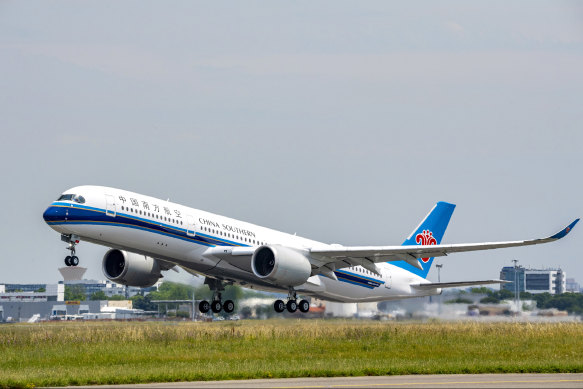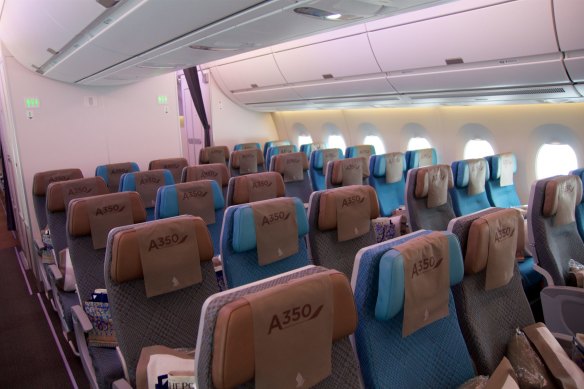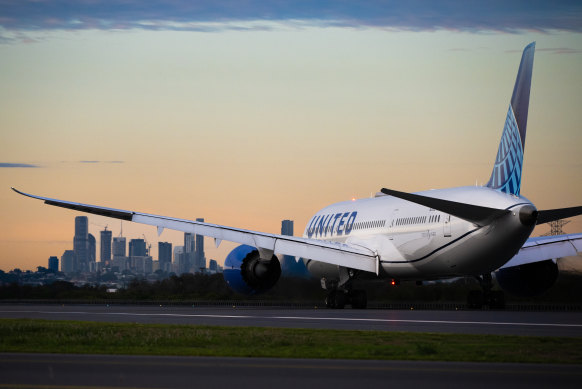This was published 1 year ago
Opinion
Will flights be cheaper next year? One factor says yes
Michael Gebicki
The TripologistWe’ve been digging deeper into our pockets to pay for international airfares. Faced with $3000-plus fares for peak season return flights to Europe with legacy carriers, and well over $2000 for a return flight to the US, some travellers have had to re-think their holidays, cutting short their time away, downgrading their hotel stays or even heading for alternate destinations – but there are signs of a change in the wind.
Why airfares are so high

China’s airlines are still not flying to Australia at the same capacity as before the pandemic.
Fuel costs more than before the pandemic. In 2019 the cost of jet fuel hovered around $US80 ($120.65) per barrel. In November 2023, that same barrel costs about 47 per cent more. On average, fuel accounts for 22 per cent of an airline’s operating costs. On a fare of $1000 before the pandemic, that additional fuel cost adds $123 to the price. In the aftermath of the pandemic airlines needed to reinvest in staff laid off during the slowdown, and staff accounts for 31 per cent of operating costs. Finally, airlines were saddled with debts during the pandemic when their aircraft fleets became a negative asset. Now the sun is shining and those debts need to be repaid.
Aircraft capacity is still constrained. In July 2023 there were 2 million seats available on international scheduled flights into and out of Australia. That’s 310,000 fewer seats than were available in July 2019. In particular, the China-based carriers are now transporting far fewer passengers into and out of Australia.
In July 2019, China-based airlines carried 193,000 passengers to-and-from Australia. In July 2023 that figure was 86,000. Those carriers once offered some of the cheapest flights to Europe and other parts of Asia. The shrinkage of those airlines has given the non-China carriers an opportunity to raise airfares without having to worry about losing passengers to their low-priced competitors.
While capacity is reduced, demand is strong. In July 2019, for all passenger flights into and out of Australia, the seat utilisation factor – the number of seats occupied as a percentage of the seats available – was 87.5 per cent. In July 2023 that figure was 89 per cent. With the appetite for international air travel running hot, aircraft flying at close to full capacity and competition subdued, the price has only one way to go.
Additional capacity is coming

Singapore Airlines is set to add more flights to its Australian routes.Credit: Getty Images
Singapore Airlines, which carries more passengers in and out of Australia apart from Qantas and Jetstar, is planning to add more than 4700 seats per week to its Singapore-Australia services. To be phased in from March 2024, this will boost capacity on the airline’s flights to Melbourne, Sydney, Adelaide, Cairns, Darwin and Perth in response to strong demand for international travel via Singapore’s Changi Airport.
In July 2023, Singapore Airlines’ seat utilisation stood at 97 per cent on flights to and from Australia. The figure for Qantas flights to and from Singapore was 94 per cent. Singapore is the third-busiest route for Qantas’ international flights, and the 7000 passengers travelling to and from Singapore every week aboard Qantas flights present a tempting target for the Singaporean carrier.
United Airlines is also boosting capacity on its services to Australia. At the end of November 2023 United began operating a thrice-weekly service between Brisbane and Los Angeles, adding to the daily Brisbane-San Francisco service which came into effect just a month previously.

United Airlines is also increasing capacity.
On the same date United upped its Sydney-San Francisco flights to twice daily and replaced the Boeing 787-9 on its US-Melbourne flights with a larger Boeing 777-300ER to add almost 100 seats per flight. That’s a confident move since United’s seat utilisation stood at 85 per cent at the peak of summer in July 2023, well below the 89 per cent average for all international airlines operating Australia services, and reflecting a slackening in demand for travel to the USA.
Cathay Pacific is also increasing its Australia services. Sydney now sees four Cathay Pacific flights per day, the same number as before the pandemic, while the airline has lifted its Melbourne service to three per day. Brisbane, Adelaide and Perth are also expected to see more flights from the Hong Kong carrier toward the end of 2023.
Could India’s airlines become serious players in Australia?
In mid-2023, Air India confirmed orders for 250 aircraft from Airbus and 290 from Boeing, one of the largest commercial airline orders ever. Most of those are single–aisle aircraft destined to operate on domestic and Asian regional routes, but the orders also include 34 A350-1000s, six A350-900s, 20 787 Dreamliners and 10 777Xs – all long-haul aircraft.
Those wide-body aircraft are what Air India needs to revitalise its long-haul fleet, and while the airline isn’t saying so, traffic out of Australia could be among its targets. India is also building new airports to relieve congestion at major hub cities.

Mumbai’s Navi Airport will open next year.
Mumbai expects to open the first phase of its new Navi Airport in December 2024, able to handle 20 million passengers annually. Close to Delhi, Noida International Airport is also scheduled to begin operations late in 2024, relieving the strain on the city’s main Indira Gandhi International Airport.
India’s major cities such as Bengaluru, Delhi, Mumbai and Hyderabad are about a 12-hour flight from Australia’s east coast cities. That puts them closer to the midway point of Australia-Europe flights than Singapore and the Gulf State ports, and for some travellers, a more comfortable transit point than the 14-hour endurance test from Brisbane, Sydney and Melbourne to Dubai and Qatar.
Which way for international airfares in 2024?
While airline operating costs and demand for seats are likely to remain at current levels, the factor that could drive down airline ticket prices in 2024 is increased capacity, and that’s in the pipeline. Already there are signs that long-haul airfares for the peak northern summer are coming off the boil.
Another potential game changer, our government is re-thinking the decision made in July 2023 by Transport Minister Catherine King to deny Qatar Airways’ application to add another 21 flights per week into Australia to the 28 it already operates. Given that Qatar was carrying 332 passengers per aircraft on its Australia flights in July 2023, that would mean another 7000 passengers per week flying in and out of Australia, and 363,000 per year. No wonder Qantas was so keen to sink the deal.
Sign up for the Traveller newsletter
The latest travel news, tips and inspiration delivered to your inbox. Sign up now.